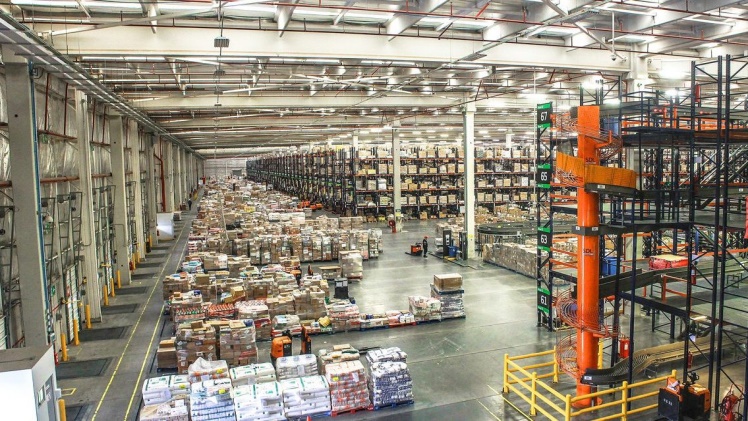The efficient operation of a warehouse depends on having the right elements in place. From storage shelving and small parts solutions to safety equipment and ergonomic tools, there are essentials to consider when setting up an efficient warehouse.
A storage system
Setting up an efficient warehouse requires a smart storage system. Maximizing available floor space is essential, as storing properly is essential for quick item identification. There needs to be plenty of space to accommodate the expected inventory and items should be arranged according to their size or SKU so that they can be easily identified and retrieved when necessary.
Many warehouses are now making use of space-saving solutions such as shelving, racking, and other automated systems that speed up and improve their operations while increasing safety standards. Investing in the right warehouse management software can also help to streamline processes and optimize the utilization of warehouse floor space.
Proper shipping labels
One of the most important steps in managing a warehouse is properly labeling all incoming and outgoing shipments. Proper shipping labels not only help maintain inventory accuracy, but also facilitate proper sorting, packing, and transportation of items. Furthermore, they allow customers to easily locate their packages during delivery or while picking up an order themselves. With the right type of labels and the right labeling system, tracking products can be swift, accurate, and cost-effective with minimum errors. An investment in a proper labeling system will pay dividends in the long run.
Racks for packing materials and supplies
Another essential component of the layout is having the proper warehouse racks for packing materials and supplies. Racks help to better organize heavier items, thereby allowing for easier access to them. In addition, they help enhance safety by ensuring that the heaviest items are loaded onto those areas where they can be safely lifted off – preventing accidents and injuries.
An effective warehouse storage rack system also helps optimize space – preventing any unneeded clutter or obstruction of important pathways as such, investing in sound racks makes good sense – as they form a vital part of maximizing storage space and enhancing worker safety within your warehouse.
Safety equipment
Good warehousing and logistics operations require that all workers stay safe, so it is absolutely essential that warehouse managers provide the proper safety equipment and training to their employees. That way, workers can be on high alert, reducing the risk of injury while they are tasked with stocking shelves, operating machinery, and loading or unloading material.
In addition to providing safety gear like hard hats, safety shoes, protective eyewear, gloves, and dust masks, warehouse managers should also clearly post signage around the facility warning of potential dangers. This will remind workers to stay vigilant while they are on the job and serve as a reminder that their employer cares about their wellbeing. Maintaining a safe workplace environment is not only important for staff morale but also necessary for meeting stringent safety regulations.
Fire extinguishers
To ensure that the workspace stays safe, fire extinguishers should be placed in accessible parts of the warehouse to help combat any unexpected fires. It’s also essential to have personnel trained to use the fire extinguishers in case of an emergency and routine maintenance checks done to make sure they are always in working order since worker safety must be a priority.
Cargo lifts
Cargo lifts are essential for setting up an efficient warehouse. By quickly and safely transporting goods from one level to another, they maximize the storage capacity of a warehouse and reduce the handling time of merchandise. Cargo lifts come with endless sling options that enable businesses to easily move numerous items at once. The endless slings also provide great flexibility as they can be used for light-duty or heavy-duty loads depending on warehouse requirements.
Not only do cargo lifts help speed up the workflow in a warehouse, but they also reduce the strain on workers and help keep costs low since there is less manual labor involved in moving materials from one level to another. With cargo lifts, warehouses can ensure a more efficient setup while still protecting their goods.
By investing in these essential elements for the warehouse setup, businesses can ensure greater efficiency when managing inventory and other operations within their facility.

